15 High-Converting Email Drip Campaign Examples That Actually Work
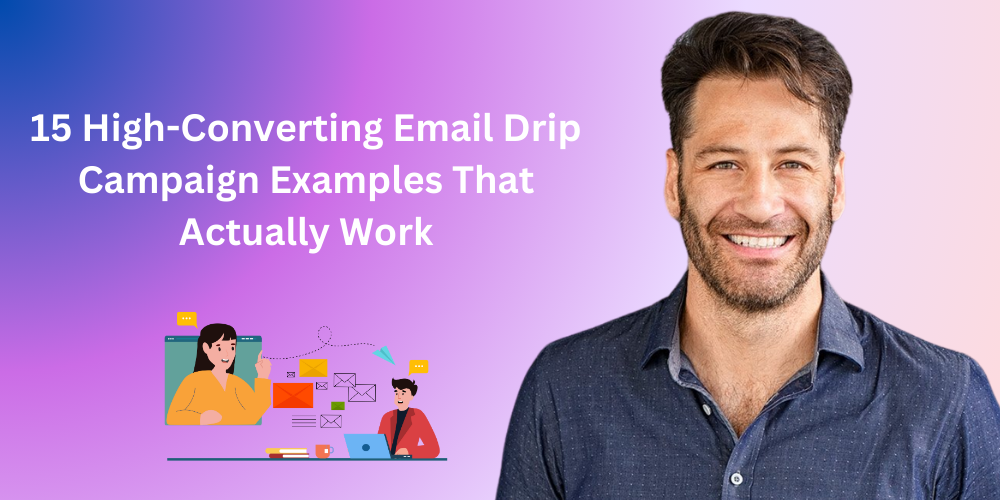
Email drip campaigns get a bad rep—mostly because we’ve all been spammed by boring ones. But when done right? They’re magic.
Drip campaigns are just a fancy way of saying, “automated emails that make people care, click, and buy.” It’s like the digital version of slow-cooking a relationship instead of blasting folks with a one-time “BUY NOW!” scream.
In this guide, we’ll walk you through some of the best email drip campaign examples that top brands are using right now to boost engagement, skyrocket conversions, and keep subscribers hooked. Whether you’re launching a product, onboarding new users, or just trying to stay top-of-mind, there’s a drip for that—and we’ve got the templates, tips, and inspiration to get you started.
What Is an Email Drip Campaign in Marketing?
It’s a set of emails sent automatically based on what people do (or don’t do). Left something in your cart? Opened a welcome email but didn’t click? Just subscribed? There’s a drip for that.
Think of it as:
- Email marketing with timing
- Less shouting, more guiding
- The email version of “I saw you looking... just saying”
Why You Should Use Email Drip Campaigns to Boost Conversions

Let’s be honest, manually sending individual emails to every lead or customer isn’t just inefficient, it’s borderline masochistic. Email drip campaigns automate this process, so you can scale your communication without sacrificing personalization or timing.
Here’s why smart marketers and sales teams swear by them:
- Save hours of manual work: Once your sequences are set up, they run on autopilot. No more copying, pasting, or trying to remember who needs what next. Your campaigns keep working in the background while you focus on strategy and growth.
- Convert leads while you sleep: With automated messaging, you’re always “on,” even when you’re offline. Drip campaigns nurture prospects with relevant content at each stage of the funnel, turning cold leads into warm conversations—and eventually, conversions.
- Send the right message at the right time: Timing is everything. Drip campaigns allow you to trigger emails based on user behavior—like downloads, sign-ups, or link clicks—so your message always feels timely and relevant.
- Nudge without annoying: No one likes a spammy inbox. A well-crafted drip sequence keeps you top of mind without being overbearing. It’s about guiding, not pushing—educating your audience and building trust along the way.
In short, email drips are your 24/7 sales assistant: always working, never sleeping, and never forgetting to follow up.
9 Types of Email Drip Campaigns Every Marketer Should Know
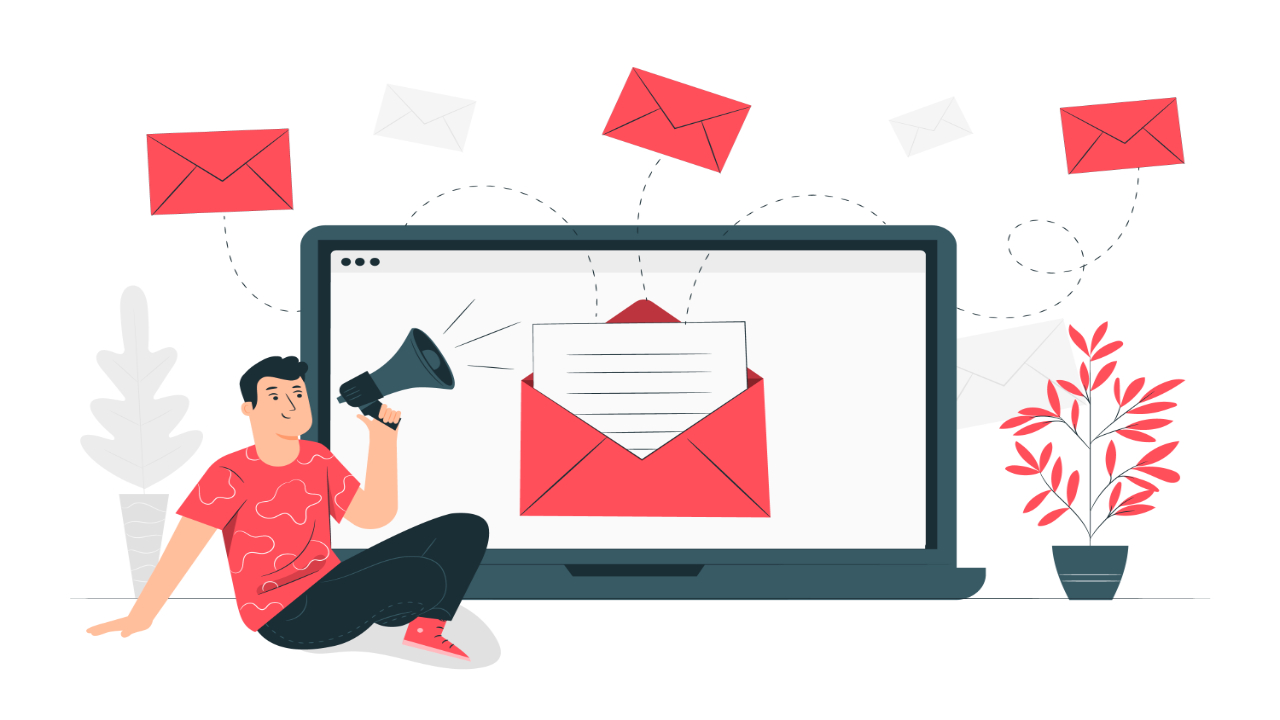
Not all email sequences are created equal. The best-performing drip campaigns are intentional, targeted, and built around the customer journey. Here are the most effective types of email drips you can implement to engage, convert, and retain your audience—without overwhelming them.
1. Welcome Drips

Your first impression matters. A welcome sequence introduces your brand, sets expectations, and guides new subscribers or users on what to do next. Whether you're delivering a lead magnet, showcasing your value proposition, or simply saying “Hey, nice to meet you,” this is onboarding—but smarter, and more personal.
2. Engagement Drips
Got great content sitting unnoticed? Use engagement drips to surface your best resources—blog posts, webinars, videos, or case studies. These emails keep your audience warm and clicking, especially if they’ve started to go quiet. Perfect for driving consistent value and rekindling interest.
3. Contest or Giveaway Drips
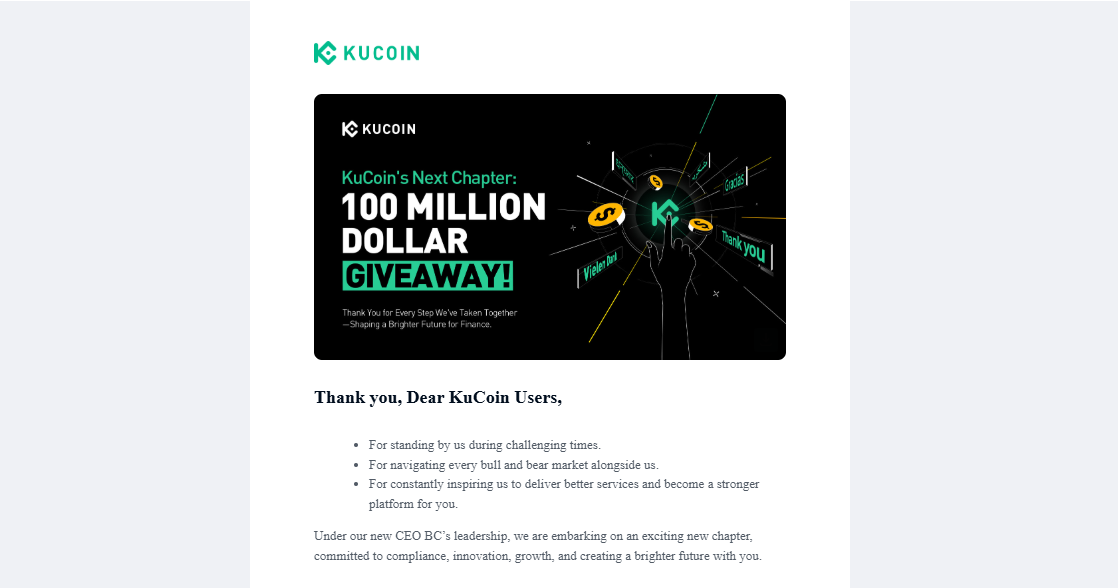
Running a giveaway? Build excitement before, during, and after the contest with timed reminders, status updates, and "last chance" nudges. It keeps your audience hyped, boosts participation, and maximizes the shareability of your campaign.
4. Announcement Drips
Launching a product? Rolling out a new feature? Instead of dropping everything in one big email, use a drip sequence to build anticipation, highlight benefits, and walk your audience through what’s new. Drip it out for better understanding—and higher impact.
5. Retargeting Drips
Someone browsed your site or clicked a product but didn’t convert? Retargeting drips let you follow up based on behavior. Maybe they need more information, a testimonial, or a little reminder that the product they liked is still waiting.
6. Abandoned Cart Drips
The timeless classic. When someone leaves an item behind, a simple “Did you forget something?” email can work wonders. Sweeten the deal with urgency (“Only a few left”) or incentives (“Here’s 10% off”) to close the sale.
7. Post-Sale Drips
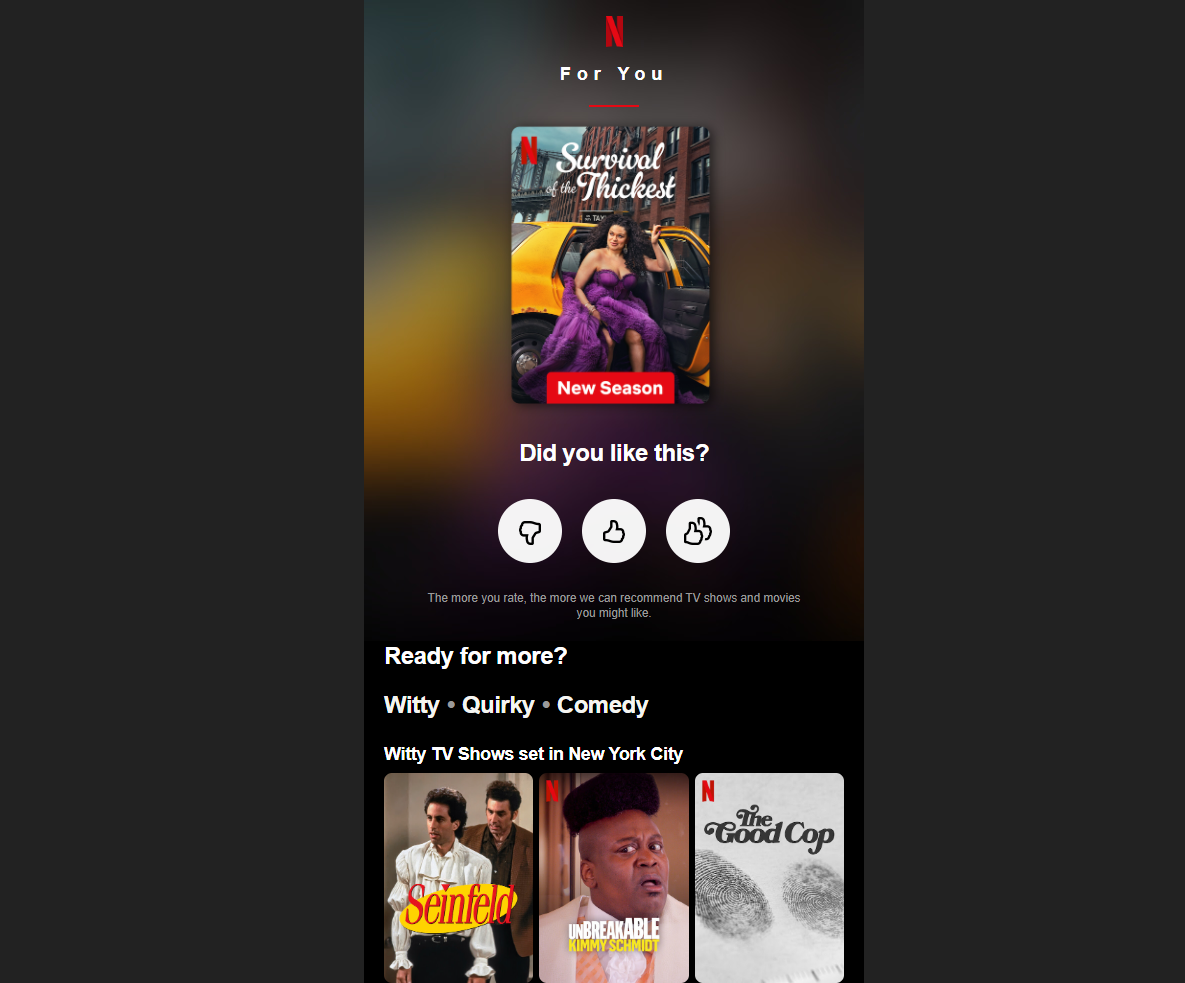
The transaction is done, but the journey isn't. Use post-sale drips to say thank you, request feedback or reviews, offer helpful tips for using the product, and recommend related items. This is how you turn buyers into loyal customers—and even brand advocates.
8. Lead Nurture Drips
Not everyone’s ready to commit on the first visit. Lead nurture sequences deliver educational, problem-solving content over time to build trust and guide your prospect toward a purchase decision. It’s the long game—but it pays off.
9. Unsubscribe Drips
Yes, even exit sequences deserve attention. When someone opts out, a well-crafted unsubscribe drip can confirm their choice, offer alternatives (like reduced frequency), or even invite them back later. Done right, it leaves the door open without being pushy.
Best Email Drip Campaign Examples from Top Brands
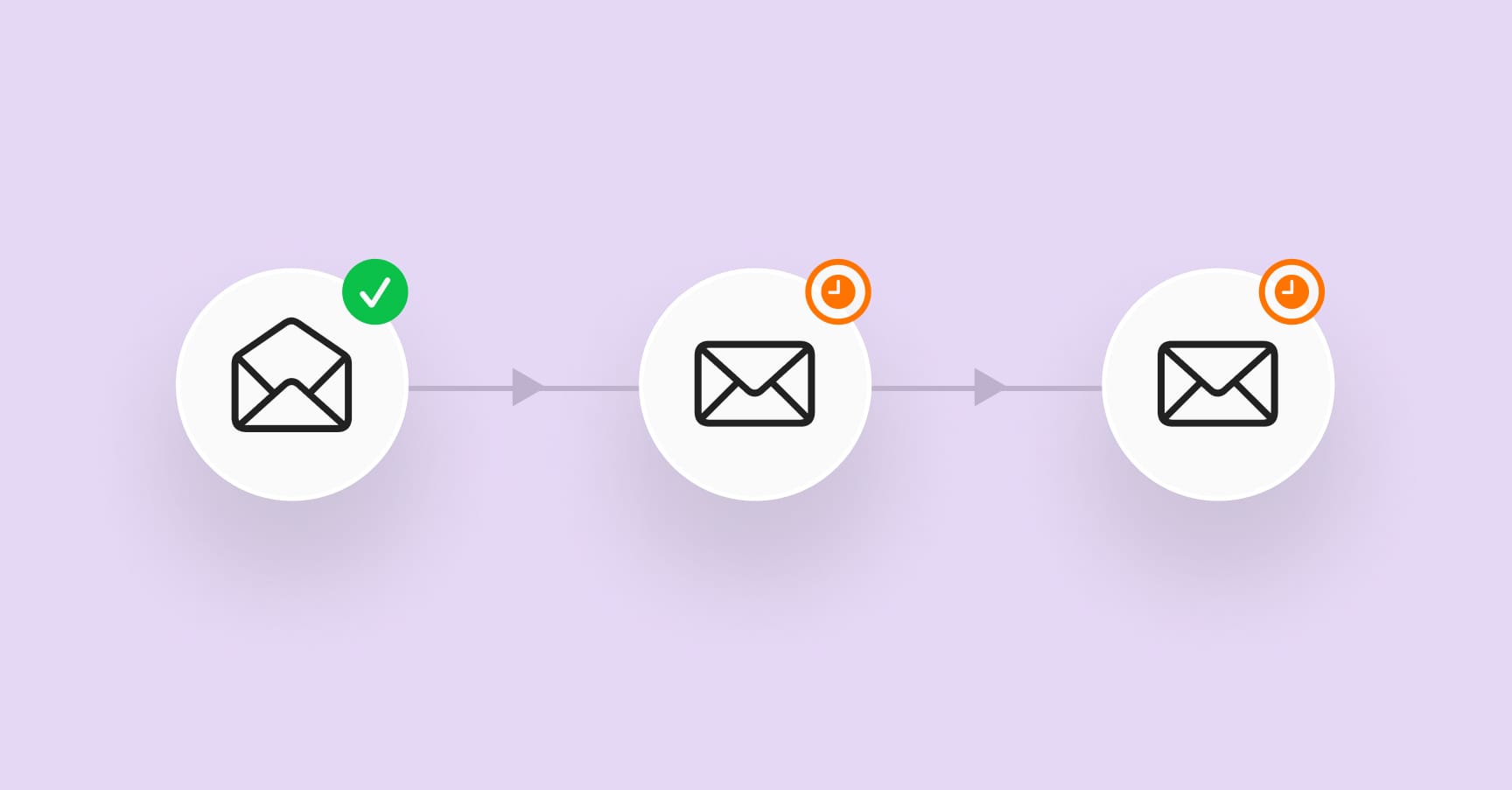
Need some real-world inspiration? These drip campaigns aren’t just good—they slap. Whether it’s onboarding, re-engagement, or post-purchase magic, these brands know how to automate with style and substance. Let’s break down what they’re doing right:
1. Zendesk’s Onboarding Flow

Zendesk doesn't stop at “Welcome.” Their onboarding drip guides new users step-by-step through the platform’s features. Each email builds confidence with clear instructions, a guided demo, and valuable tips. It's product education done right—simple, progressive, and user-first.
2. Bellroy’s Post-Purchase Flow
After you place an order, Bellroy sends beautifully designed emails with shipping updates, product care instructions, and relevant accessories. It’s polished and personal—feels like a thank-you letter from a friend, not a pushy upsell.
3. SkinnyDip’s Retargeting Emails
You visit their site, browse a few items, and leave. Soon after, your inbox gets a playful “See anything you liked?” with product reminders and sometimes a cheeky discount. It’s bold, fun, and effective at pulling shoppers back in.
4. MailChimp’s Education Series
MailChimp knows not every new user is ready to launch a campaign. So, they drip out helpful guides, tutorials, and content strategy tips. The tone is friendly and educational, building trust while showing off platform value.
5. Shutterstock’s Feedback Ask
After using their platform, Shutterstock checks in with an easy-going, humor-laced feedback request. It feels more like a conversation than a survey—making users more likely to engage (and feel heard).
6. Trello’s Holiday Campaign
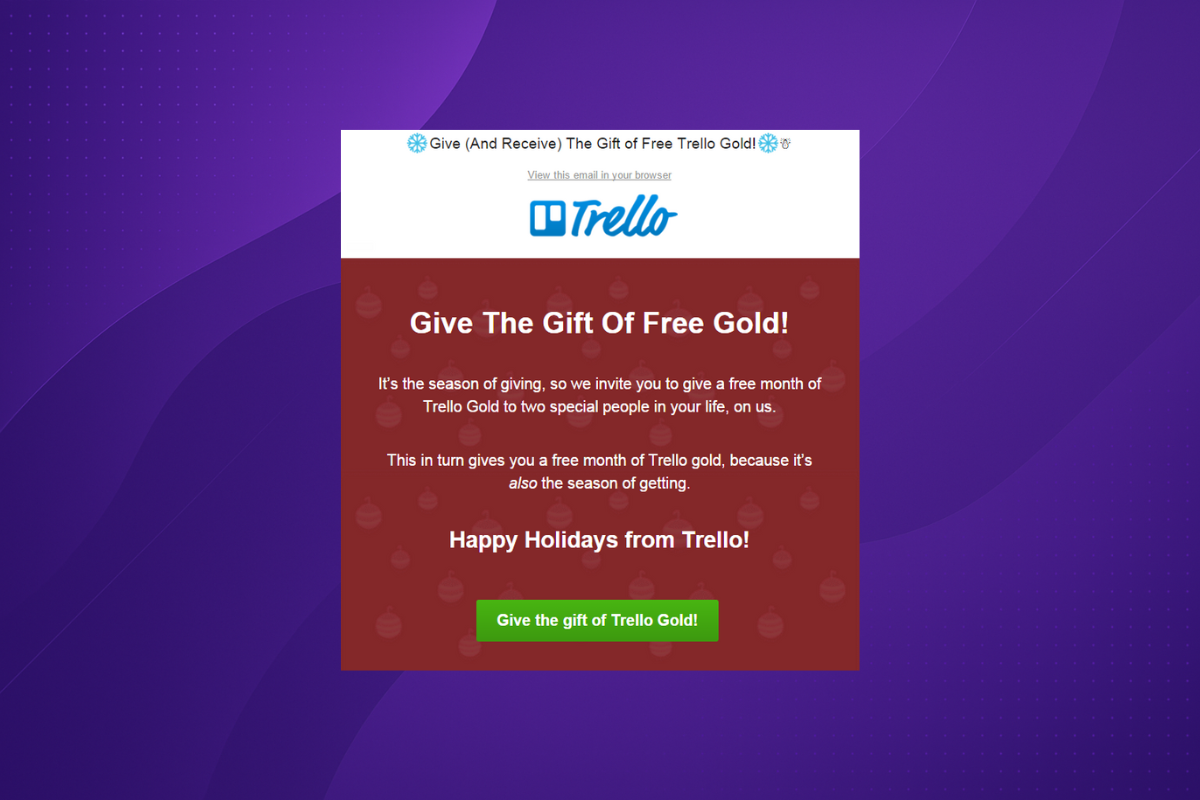
Trello runs a “12 Days of Tips” campaign over the holidays. Each email includes a productivity boost or feature spotlight, wrapped in a festive design. It keeps users engaged during downtime and reminds them why they love the tool.
7. Paul Mitchell’s “Breakup” Series
When someone unsubscribes, Paul Mitchell sends a cheeky email: “It’s not you, it’s us.” It's a humorous way to show there's no hard feelings—and subtly leaves the door open for re-subscribing in the future.
8. Kenneth Cole’s Cart Saver
Add an item to your cart but don’t check out? Kenneth Cole swoops in with a sleek reminder and a limited-time discount. They even add a countdown timer to create urgency. It’s persuasion with a touch of pressure.
9. Netflix’s Win-Back Flow
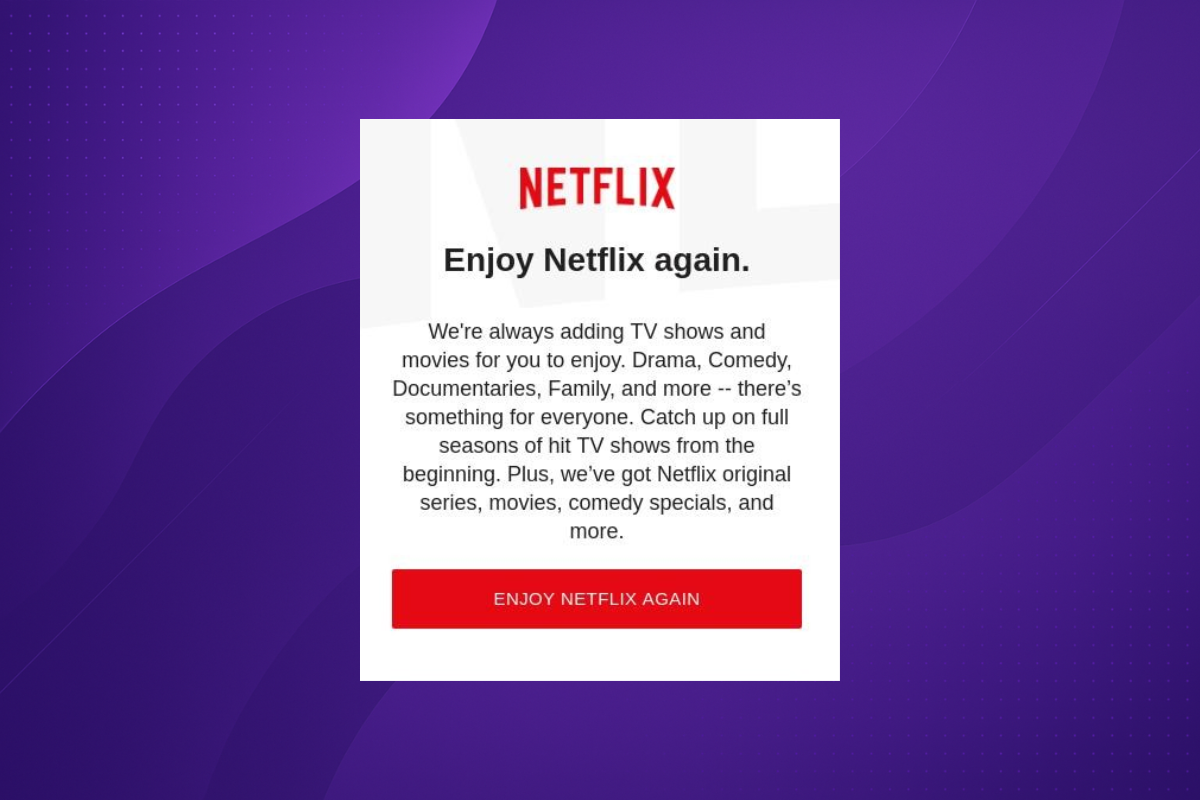
Cancel your subscription? Netflix doesn’t just let you go. Their follow-up emails ask why, share popular new releases, and remind you of what you’re missing. The tone is friendly, not clingy—and often enough to reignite FOMO.
10. Amazon’s Upsell Emails
Amazon’s post-purchase drips are subtle and smart. Buy a book? Expect a suggestion for a matching reading light, related titles, or Kindle deals. The recommendations are personalized, making upsells feel more helpful than salesy.
11. Airbnb’s Recommender Drip
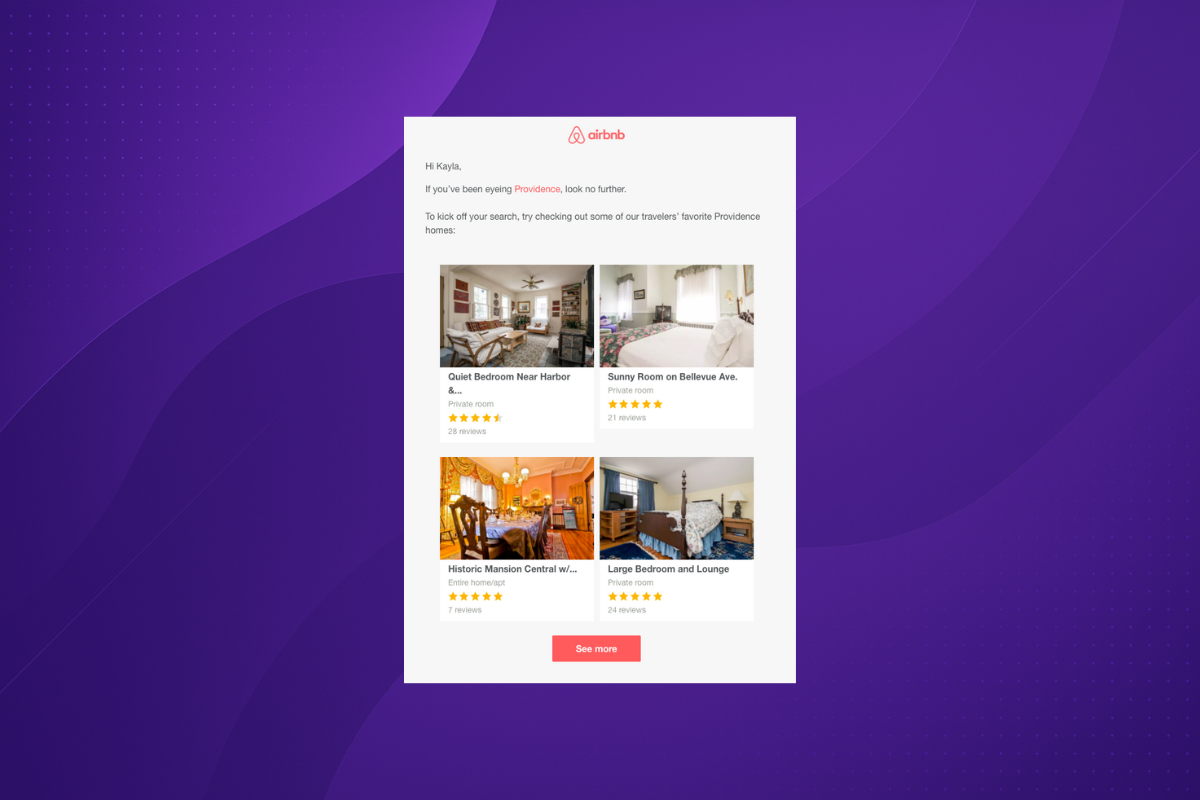
You browse a few places but don’t book. Airbnb follows up with tailored options based on your search—right down to price range and location. It feels like a friend sending you trip ideas, not an algorithm pushing inventory.
12. Grammarly’s Reminder Campaign
Leave an edited document unfinished? Grammarly gently nudges you with “Want to finish checking your doc?” emails. They're short, relevant, and genuinely useful, reinforcing the value of the product without nagging.
13. Patagonia’s Weather-Based Drip
Patagonia gets creative with data. Their email content adapts to your local weather: chilly? You’ll see jackets. Hot? Lightweight outdoor gear. These context-aware emails are a great example of personalized automation done right.
14. Leesa’s FOMO Discount Campaign
Leesa knows how to trigger urgency. Their discount drips are clean, simple, and time-sensitive. Think bold visuals, clear CTAs, and countdown timers. “Sale ends in 6 hours” gets clicks—and conversions.
15. Dollar Shave Club’s Cross-Sell Flow
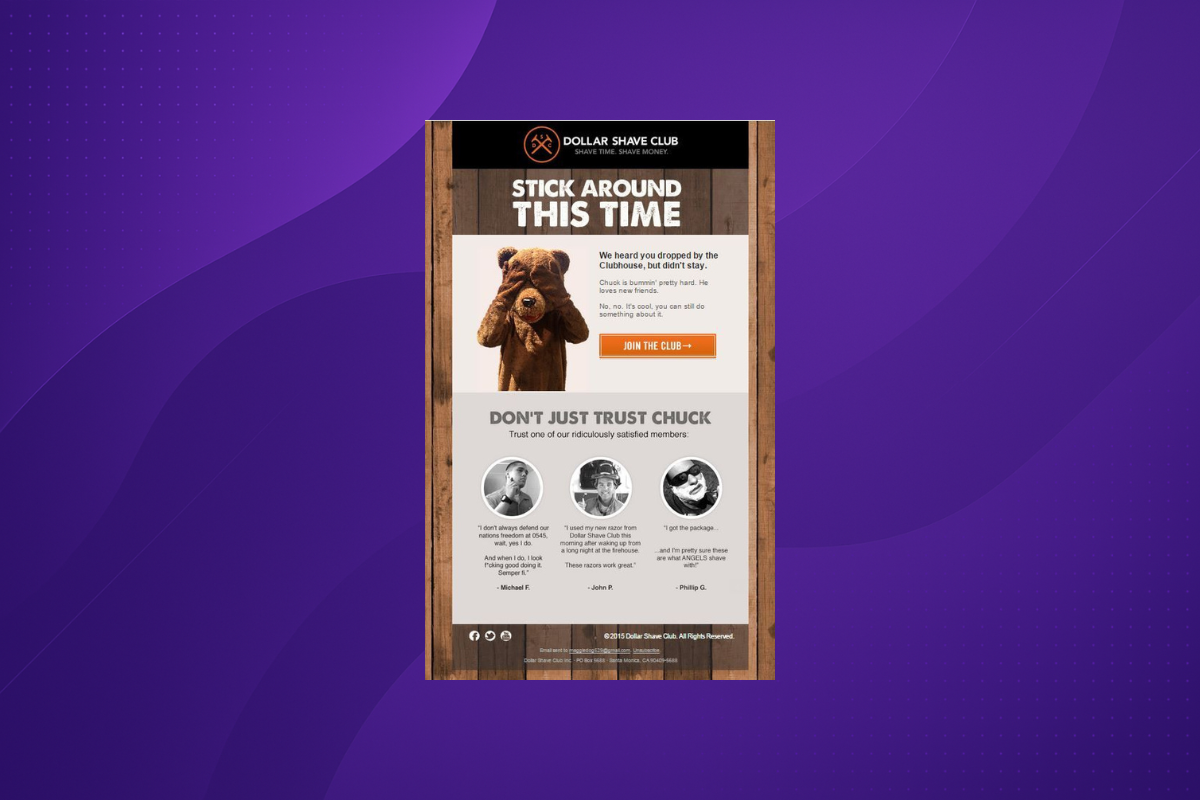
Buy razors, and shortly after, you’ll get an email suggesting shaving cream or aftershave. It's casual, humorous, and on-brand. With one click, you can add to your order before it ships. Minimal effort, maximum upsell.
Top Benefits of Email Drip Campaigns for Business Growth
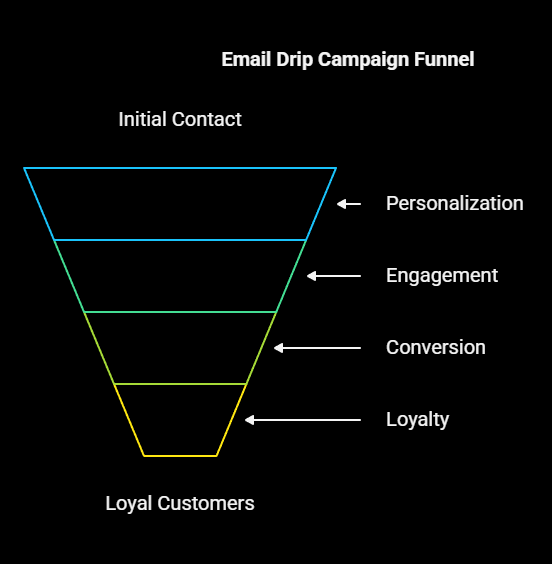
Email drip campaigns aren’t just a trendy marketing tool—they’re a strategic powerhouse that helps you engage leads, nurture relationships, and drive revenue. Whether you're a startup, SaaS brand, eCommerce store, or B2B firm, the right drip strategy can supercharge your growth with less effort and more results.
Here’s why drip campaigns deserve a front-row seat in your marketing toolkit:
1. Improve Efficiency and Save Time
Automated email sequences run in the background—so you don’t have to.
Set it once, and let your campaign work 24/7. Whether you're onboarding new users, following up on form fills, or nudging abandoned carts, drip campaigns eliminate the need for manual follow-ups. This frees up your team’s time to focus on strategy, not spreadsheets.
2. Deliver Personalized Customer Experiences
One-size-fits-all is out. Personalization is in. Email drips can be customized based on user behavior, interests, or stage in the funnel. You can send different messages to new subscribers, first-time buyers, power users, or inactive leads—ensuring every touchpoint feels relevant, helpful, and timely.
Result: Higher open rates, more engagement, and customers who feel seen.
3. Increase Response and Conversion Rates
Timing + relevance = results. Because drip campaigns are triggered by real actions (like downloads, sign-ups, or purchases), they show up when your audience is most engaged. This increases the chances of clicks, replies, and conversions—whether your goal is sign-ups, sales, or bookings.
4. Promote Content Based on User Intent
Send smarter content that aligns with what your audience actually wants.
Whether someone is browsing your blog, reading a case study, or comparing products, drip campaigns can respond with curated content that supports their journey. This helps educate leads, reduce bounce rates, and keep your brand top-of-mind without being pushy.
Think:
- Product tips after sign-up
- Webinars for mid-funnel leads
- Case studies for decision-stage prospects
5. Build an Automated Email Marketing Funnel
Turn strangers into leads, leads into buyers, and buyers into loyal fans.
Drip campaigns create a natural flow across the entire customer journey. From welcome series to onboarding, nurture to re-engagement, each sequence moves your contact closer to action without the manual hustle.
6. Track Campaign Results Easily
Data-driven marketing at its finest. Email automation platforms provide clear insights into how each campaign is performing. Track open rates, click-through rates, conversions, and more—all in one dashboard. This means you can test, optimize, and improve over time based on what’s actually working.
Key metrics to watch:
- Open rate (Are your subject lines working?)
- Click-through rate (Are people engaging?)
- Unsubscribe rate (Are you emailing too much—or the wrong thing?)
- Conversion rate (Are your CTAs effective?)
7. Drive Customer Loyalty and Repeat Purchases
The first sale is just the beginning. Drip campaigns keep the conversation going after purchase—through thank-you messages, product care tips, review requests, upsells, and exclusive offers. This consistent value builds brand trust and encourages repeat buying behavior.
Use cases:
- Post-purchase how-to series
- Loyalty discounts after multiple orders
- Anniversary or milestone celebration emails
Must-Have Elements of a Successful Email Drip Campaign
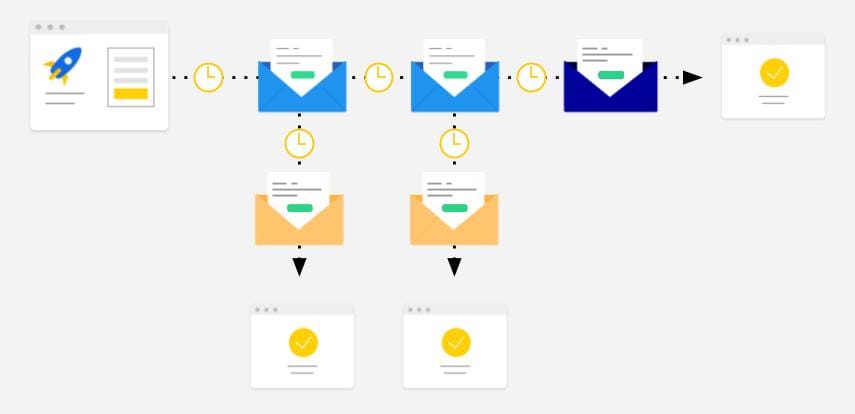
A drip campaign is only as effective as the strategy behind it. It's not just about automating emails—it's about sending the right messages to the right people at the right time. Think of it like cooking: you need quality ingredients, perfect timing, and a bit of flavor to really make it work.
Here’s what every high-performing email drip campaign has in its recipe:
- A Segmented and Targeted Email List
Don't spray and pray. Segmentation is everything. You wouldn’t send beard oil promos to someone who just bought lipstick—or push enterprise software to someone who downloaded a beginner’s guide. Tailor your messaging based on customer behavior, purchase history, demographics, or interests. A targeted list increases open rates, reduces unsubscribes, and helps your emails actually convert.
- Engaging and High-Quality Email Content
You’re not writing a novel—but you’re not sending spam either. Every email should deliver value: a quick tip, a smart insight, a relatable line, or a resource your audience actually wants. The tone should match your brand—whether that’s funny, warm, professional, or bold—but the content must be clear, concise, and worth opening. Don’t waste words. Respect inbox space.
Quick checklist:
- Is the subject line scroll-stopping?
- Does the first sentence hook them?
- Is the CTA crystal clear?
- Would you read it?
- Consistent Email Marketing Execution
No one likes being ghosted—or spammed. You want to stay top-of-mind, not top-of-trash. A solid drip campaign is consistent without being clingy. Whether it’s a daily welcome series, a weekly newsletter, or a monthly product update, your timing should align with the customer journey. Show up regularly enough to be remembered, not so often that you're ignored.
Golden rule: Always leave them wanting more, not hitting “unsubscribe.”
How to Create an Email Drip Campaign That Converts

Building a drip campaign from scratch might sound like a tech headache waiting to happen—but it doesn’t have to be. With the right steps, the right tools, and a smidge of caffeine-fueled motivation, you can create email sequences that convert while you binge Netflix. Here's how to set it up without losing your sanity (or your cool):
1. Know Your Audience
Seriously, stalk them a little (ethically). What do they care about? What problems keep them up at night? What kind of emails would you actually open if you were in their shoes? Use surveys, social media comments, purchase history, and even your DMs to understand what makes your audience tick. Because if you're guessing, you're losing.
Quick Tip: Use buyer personas. Yes, they sound boring. But they help you write like you're talking to real people—not just “leads.”
2. Set a Clear Goal
Don’t send emails just because everyone else is doing it. What do you actually want this campaign to achieve? More sign-ups? Increased trial-to-paid conversions? Product usage? Better NPS scores? Be clear—and laser focused. One drip = one mission. Anything more than that, and you risk confusing your reader (and your analytics).
Goal examples:
- Convert free users to paid within 7 days
- Drive 10% more webinar registrations
- Re-engage inactive users after 30 days
3. Pick the Right Tools
Your ESP should talk to your CRM—and your sanity. Choose a tool that integrates easily with the rest of your stack, especially your CRM or lead scoring system. If you’re using Leadplay.io (shameless plug), it pairs beautifully with most modern email platforms and workflows—plus it automates your prospecting too.
Popular options:
- ActiveCampaign – Great for automation + CRM
- Mailchimp – Simple, solid for beginners
- Klaviyo – Ecomm favorite
- HubSpot – Best for B2B and scaling
- ConvertKit – For creators and solopreneurs
4. Map Your Funnel
Drip = strategy, not spaghetti. Before you write anything, outline the user journey. Where is the user starting, and where do you want them to end up? Break down every touchpoint—welcome emails, onboarding tips, follow-ups, reminders, check-ins, offers, win-backs. This helps you deliver the right message at the right time.
Use flowcharts or tools like:
- Funnelytics
- Whimsical
- Miro
5. Write Like a Human
No “Dear Valued Customer” nonsense. People don’t want to read emails from robots (unless it’s ChatGPT, hi 👋). Write like you’re talking to a real person. Keep it clear, casual, and easy to scan. Break up long paragraphs, use headers, bullet points, emojis if your brand allows—and always sound like you get them.
Golden rule: Write emails you’d want to open. And maybe even smile while reading.
6. Launch It
Don’t wait until it's “perfect.” There’s no such thing. Hit that schedule or send button and let the automation run. Monitor the early results, make sure the logic flows correctly, and confirm nothing’s stuck in draft limbo. Trust the process—and the tech.
7. Test and Improve
Good campaigns evolve. Great ones never stop tweaking. Your job doesn’t end at launch. Track your open rates, click-through rates, unsubscribe rates, and conversion goals. If something’s underperforming, don’t panic—just pivot. Try a punchier subject line, rewrite your CTA, change the send time, or test a new sequence.
Tools that help:
- A/B testing built into your ESP
- Google Analytics for site behavior
- Heatmaps (e.g. Hotjar) for post-click insights
Conclusion
Email drip campaigns aren’t dead. They’re just often done wrong. If you’re going to send automated emails, make them worth opening. Make them funny. Make them helpful. Make them you. And hey, if Netflix, Amazon, and Bellroy can run brilliant campaigns, so can you.